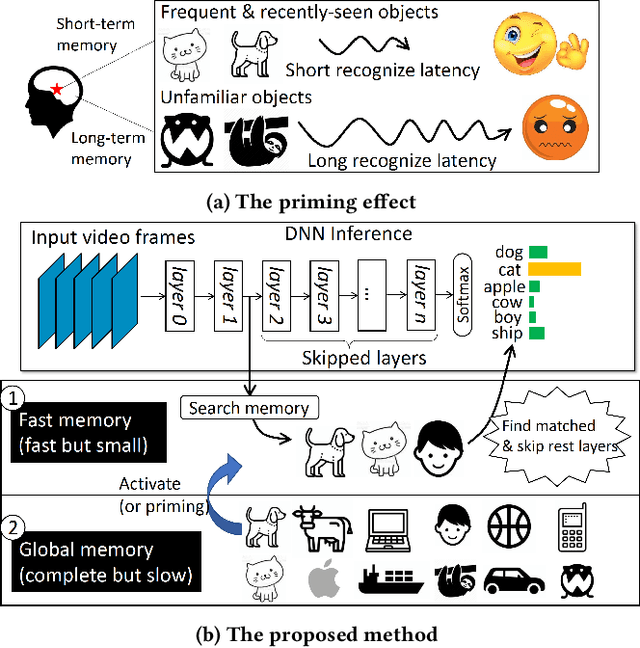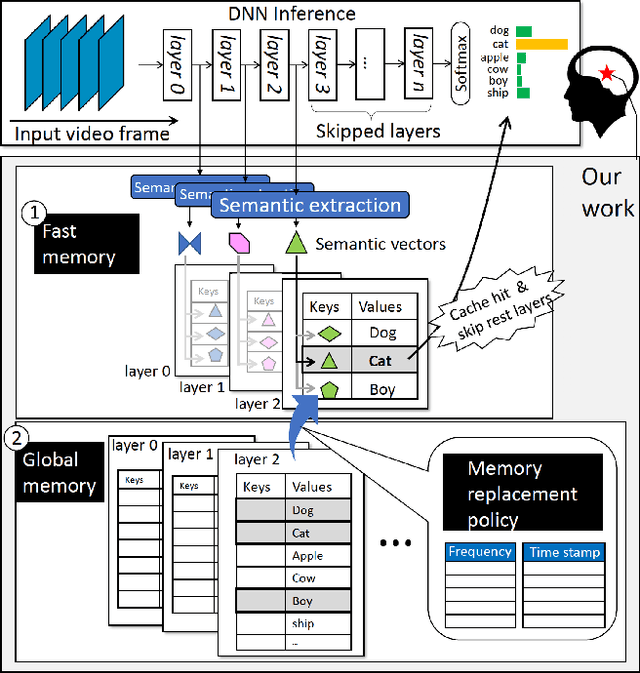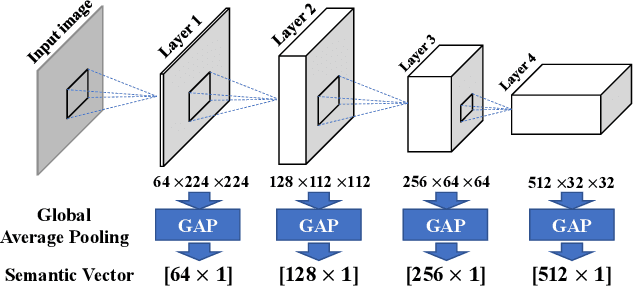Boosting Mobile CNN Inference through Semantic Memory
Paper and Code
Dec 05, 2021



Human brains are known to be capable of speeding up visual recognition of repeatedly presented objects through faster memory encoding and accessing procedures on activated neurons. For the first time, we borrow and distill such a capability into a semantic memory design, namely SMTM, to improve on-device CNN inference. SMTM employs a hierarchical memory architecture to leverage the long-tail distribution of objects of interest, and further incorporates several novel techniques to put it into effects: (1) it encodes high-dimensional feature maps into low-dimensional, semantic vectors for low-cost yet accurate cache and lookup; (2) it uses a novel metric in determining the exit timing considering different layers' inherent characteristics; (3) it adaptively adjusts the cache size and semantic vectors to fit the scene dynamics. SMTM is prototyped on commodity CNN engine and runs on both mobile CPU and GPU. Extensive experiments on large-scale datasets and models show that SMTM can significantly speed up the model inference over standard approach (up to 2X) and prior cache designs (up to 1.5X), with acceptable accuracy loss.
 Add to Chrome
Add to Chrome Add to Firefox
Add to Firefox Add to Edge
Add to Edge